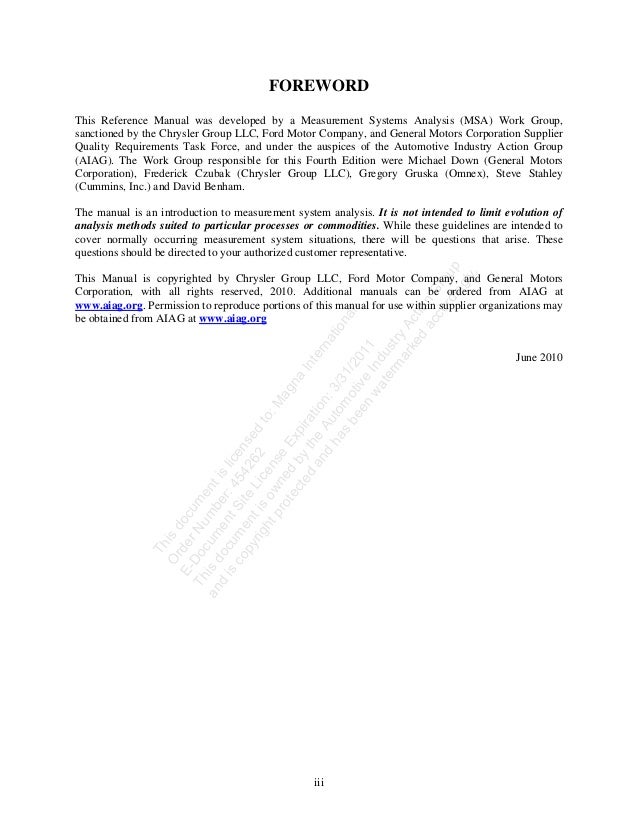Measurement System Analysis Reference Manual Aiag
Aiag msa 4th ed. 1. Thisdocum entislicensed to:M agna International OrderNum ber:454262 E-Docum entSite License Expiration:3/31/2011 Thisdocum entisowned bythe Autom otive IndustryAction Group and iscopyrightprotected and hasbeen waterm arked accordingly. Thisdocum entislicensed to:M agna International OrderNum ber:454262 E-Docum entSite License Expiration:3/31/2011 Thisdocum entisowned bythe Autom otive IndustryAction Group and iscopyrightprotected and hasbeen waterm arked accordingly.
Measurement System Analysis – MSA Measurement system analysis (MSA) is an experimental and mathematical method of determining how much the variation within the measurement process contributes to overall process variability. There are five parameters to investigate in an MSA: bias, linearity, stability, repeatability and reproducibility.

According to AIAG (2002), a general rule of thumb for measurement system acceptability is:. Under 10 percent error is acceptable. 10 percent to 30 percent error suggests that the system is acceptable depending on the importance of application, cost of measurement device, cost of repair, and other factors. Over 30 percent error is considered unacceptable, and you should improve the measurement system. AIAG also states that the number of distinct categories the measurement systems divides a process into should be greater than or equal to 5. In addition to percent error and the number of distinct categories, you should also review graphical analyses over time to decide on the acceptability of a measurement system. Reference: Automotive Industry Action Group (AIAG) (2002).
Measurement System Analysis Reference Manual Aiag
Measurement Systems Analysis Reference Manual. Chrysler, Ford, General Motors Supplier Quality Requirements Task Force.